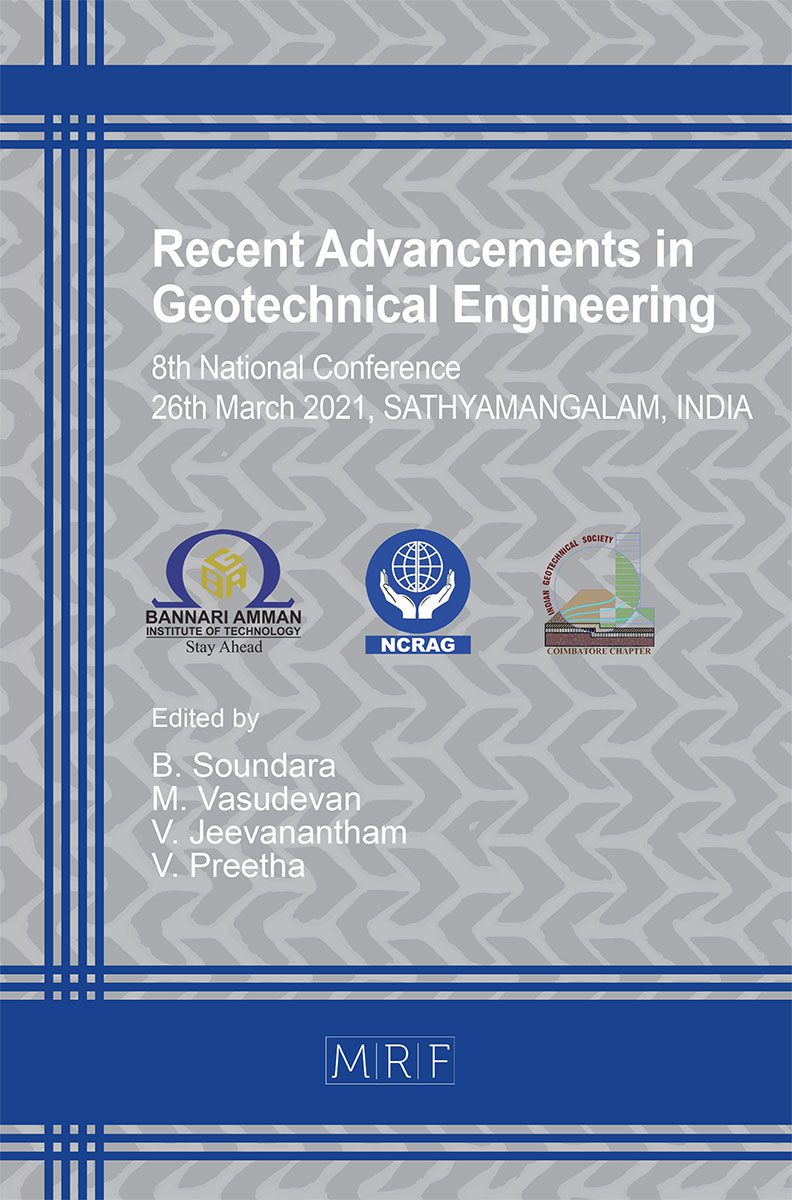Self-Compacting Concrete Properties of Recycled Coarse Aggregate
R. Premkumar, Ramesh Babu Chokkalingam, Vemula Jayanth Kumar
download PDFAbstract. Self-compacting concrete, which is characterized by its capacity to flow, can also consolidate under its weight. Hardened concrete from concrete building demolition can be used to partially replace natural coarse aggregate in self-compacting concrete. The current study compares the properties of self-compacting concrete with 0 percent, 25%, 50%, 75%, and 100% substitution of recycled coarse aggregate in the fresh and hardened states. The evolution of passing ability properties using the L-box test, filling ability properties using the slump cone test, and segregation properties using the V-funnel test are also included. Compression, tension, and flexural strength are all checked for hardened properties. Rapid chloride permeability and sorptivity tests are used to assess durability. The experimental program revealed that at RCA utilization levels of 25% to 50%, little to no negative impact on power, workability, or durability properties was observed.
Keywords
Self-Compacting Concrete, Recycled Coarse Aggregate, Mechanical, Durability
Published online 8/15/2021, 8 pages
Copyright © 2021 by the author(s)
Published under license by Materials Research Forum LLC., Millersville PA, USA
Citation: R. Premkumar, Ramesh Babu Chokkalingam, Vemula Jayanth Kumar, Self-Compacting Concrete Properties of Recycled Coarse Aggregate, Materials Research Proceedings, Vol. 19, pp 115-122, 2021
DOI: https://doi.org/10.21741/9781644901618-15
The article was published as article 15 of the book Recent Advancements in Geotechnical Engineering
![]() Content from this work may be used under the terms of the Creative Commons Attribution 3.0 licence. Any further distribution of this work must maintain attribution to the author(s) and the title of the work, journal citation and DOI.
Content from this work may be used under the terms of the Creative Commons Attribution 3.0 licence. Any further distribution of this work must maintain attribution to the author(s) and the title of the work, journal citation and DOI.
References
[1] Sherif A. Khafaga (2014) ”Production of High strength self compacting concrete using recycled concrete as fine and /or coarse aggregates”. World applied sciences journal 29 940: 465-474.
[2] Ozbakkaloglu, T.; Gholampour, A.; Xie, T.Y. “Mechanical and durability properties of recycled aggregate concrete: Effect of recycled aggregate size and content on the behaviour”. J. Mater. Civ. Eng. vol. 30, pp. 04017275, 2017. https://doi.org/10.1061/(ASCE)MT.1943-5533.0002142
[3] B. Gonza´ lez-Fonteboa , F. Martı´nez-Abella, “Concretes with aggregates from demolition waste and silica fume Materials and mechanical properties,” Building and Environment, vol 43, pp. 429–437, 2008. https://doi.org/10.1016/j.buildenv.2007.01.008
[4] Isaia, G. C., Gastaldini, A. L. G., and Moraes, R.“Physical and pozzolanic action of mineral additions on the mechanical strength of high-performance concrete.” Cem. Concr. Vol. 25, pp. 69–76, 2003. https://doi.org/10.1016/S0958-9465(01)00057-9
[5] Kamal M.M, Safan M.A.,Etman Z.A and Eldaboly E.A(2013).”Evaluating the prolonged properties of fresh self compacting concrete incorporating recycled aggregates.”International journal of current engineering and technology ISSN 2277-4106. Vol :3 issue :2. https://doi.org/10.21608/erjm.2013.67433
[6] Nwzad Abduljabar Abdulla1,” Effect of Recycled Coarse Aggregate Type on Concrete”. J. Mater. Civ. Eng. vol. 27(10), pp. 04014273, 2015. https://doi.org/10.1061/(ASCE)MT.1943-5533.0001247
[7] Moslem Mohammadi Jatani, Ali delnavaz(2017).” A study on strength and durability of self compacting concretes made of recycled aggregates. “Journal of structural engineering and Geotechnics
[8] P. Saravana Kumar and G. Dhinakaran, “Effect of Admixed Recycled Aggregate Concrete on Properties of Fresh and Hardened Concrete”, Journal of Materials in Civil Engineering, vol. 24, pp. 494-498, 2012. https://doi.org/10.1061/(ASCE)MT.1943-5533.0000393
[9] Premkumar R, Ramesh BabuChokkalingam and M Shanmugasundaram, “Durability Performance of Fly Ash and Steatite Powder Based Geopolymer Concrete”, IOP Conference Series: Materials Science and Engineering, vol. 561, 012055, 2019, Available from: https://doi.org/10.1088/1757-899X/561/1/012055












